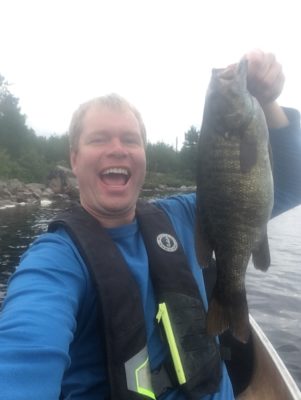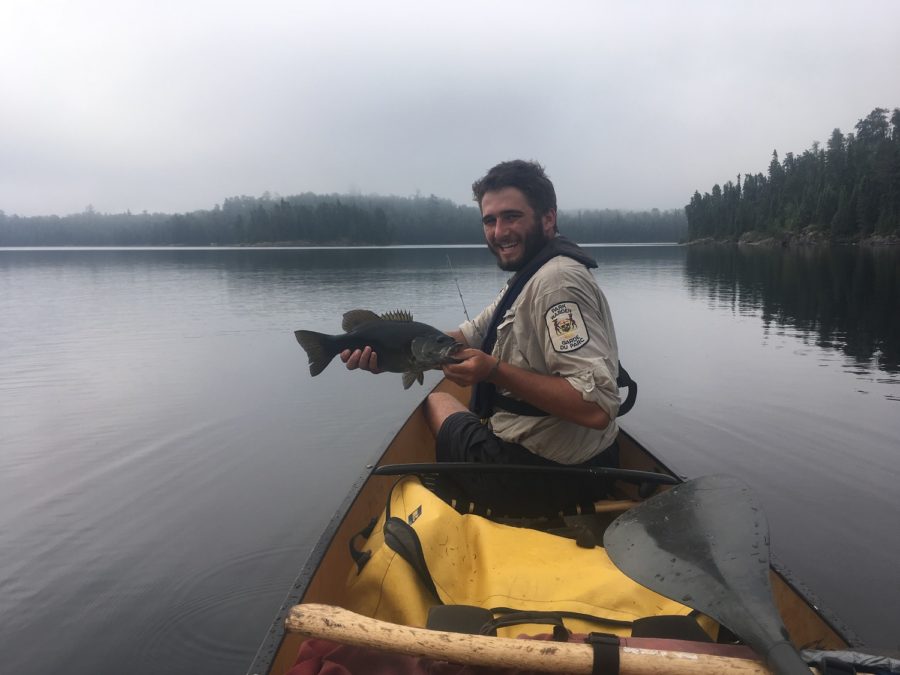Today’s post comes from James Burns, a conservation officer, and former Quetico Provincial Park interior ranger from 2000-2013.
If I thought more people were going to read this article, I’d almost feel guilty, for a gentleman should not kiss and tell; or in this case, catch and tell. Thankfully I’m no gentleman!
Before anyone gets excited, I’m not talking romance today (though, personally, I find a five-pound small-mouth pretty darn sexy, and I know quite a few other Quetico fisher persons who feel the same way!).
So. Bass. Big bass

Big Small-Mouth Bass, more specifically.
I’m going to let you in on a little secret about small-mouths in Quetico Provincial Park. The best time to fish them is in the fall: last week of August and first two weeks of September, to be exact.
Not only are these big fish at their peak of feeding aggression at this time of year, but there are more of them. Why? Well, after gorging on ciscos or smelt all summer (the preferred food of choice for a bass in northwestern Ontario) a 3 lb bass has put on enough weight to become a 4 lb bass and a 4lb-er has become a 5lb-er, and- so on.
I can’t tell you how many times I’ve caught an 18-inch bass that would weigh 3 lbs on average but, because it’s September, he’s morphed into a 4 lb football bass.

The fighting strength of the fish is simply incredible at this time of year. Fish that are normally renowned for putting on spectacular fights become that much feistier because of the added mass they’ve put on, preparing for the long winter ahead. Bass are largely dormant in the winter time, so the warm fall water has them packing on the pounds as fast as they can.
It’s up to you, dear angler, to take advantage of this season
How, you ask? It’s simple. Give those fish what they want. Big small-mouths are focused on high-energy food like cisco or smelt. Most of the time they feed in large schools in order to corral the bait.

Look for natural pinch-points in lakes that have easy access to deeper water. Schools of bass will use these areas as ambush points, and will spend a good percentage of their day milling around these pinches, waiting for a school of baitfish to come through. Constantly be on the lookout for fish breaking the surface, even in rough water. If you see surfacing fish, odds are you’ve found a school of hungry bass.

Throw them anything that looks like a blue and white baitfish. You’ve got hundreds of options, from soft plastics (Zoom Flukes, etc.), hardbaits (Rapala Jerk Baits, etc.) or my personal favourite, surface baits (Zara Spooks, etc.).
 Catching a 5 lb angry bass is one of my favourite things in the world, but doing it on a surface bait? Well, that’s as good as it gets in my books.
Catching a 5 lb angry bass is one of my favourite things in the world, but doing it on a surface bait? Well, that’s as good as it gets in my books.
It’s especially amazing when you boat a big bass, look down into the water, and see five of his friends waiting for leftovers!
See you folks in September!
